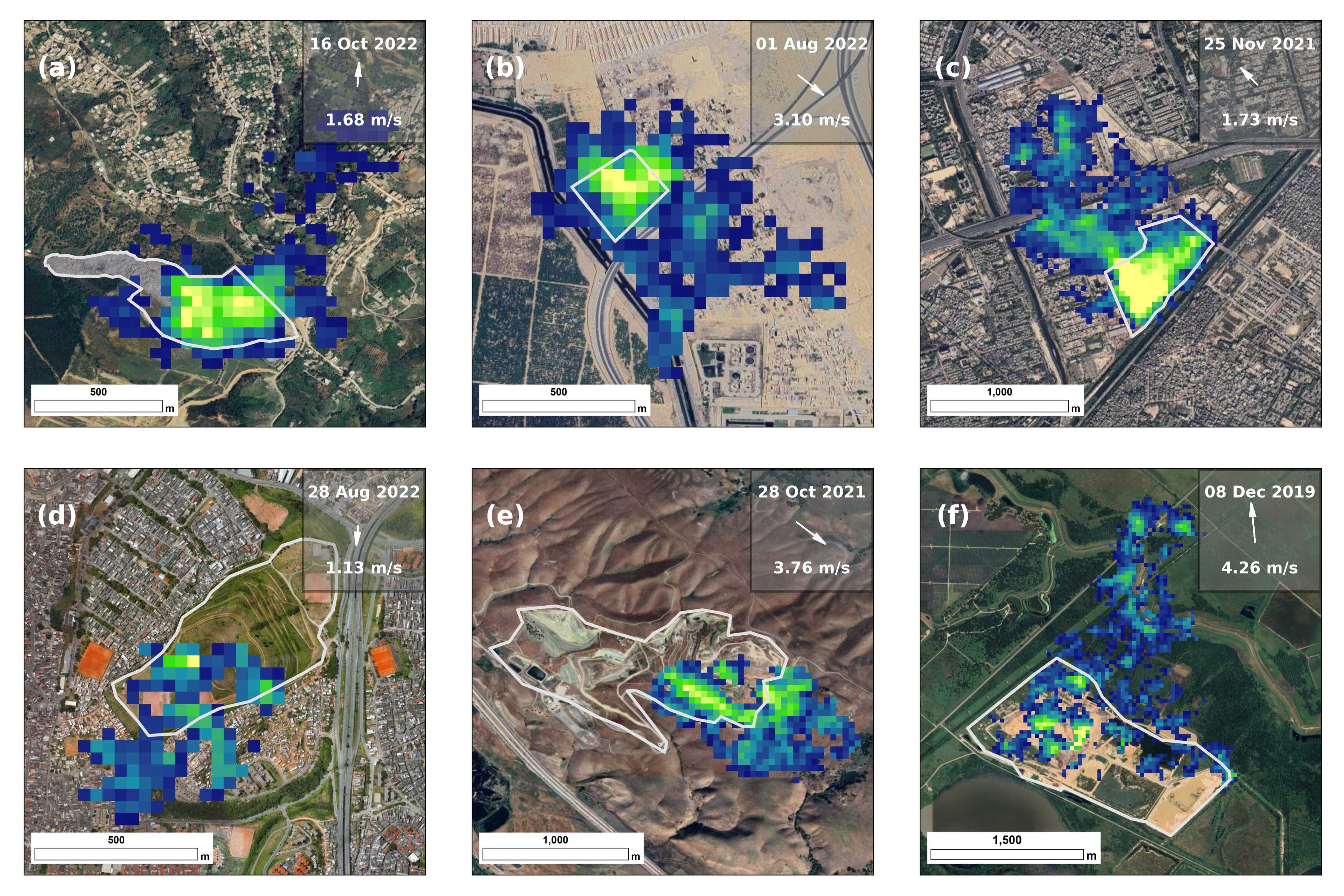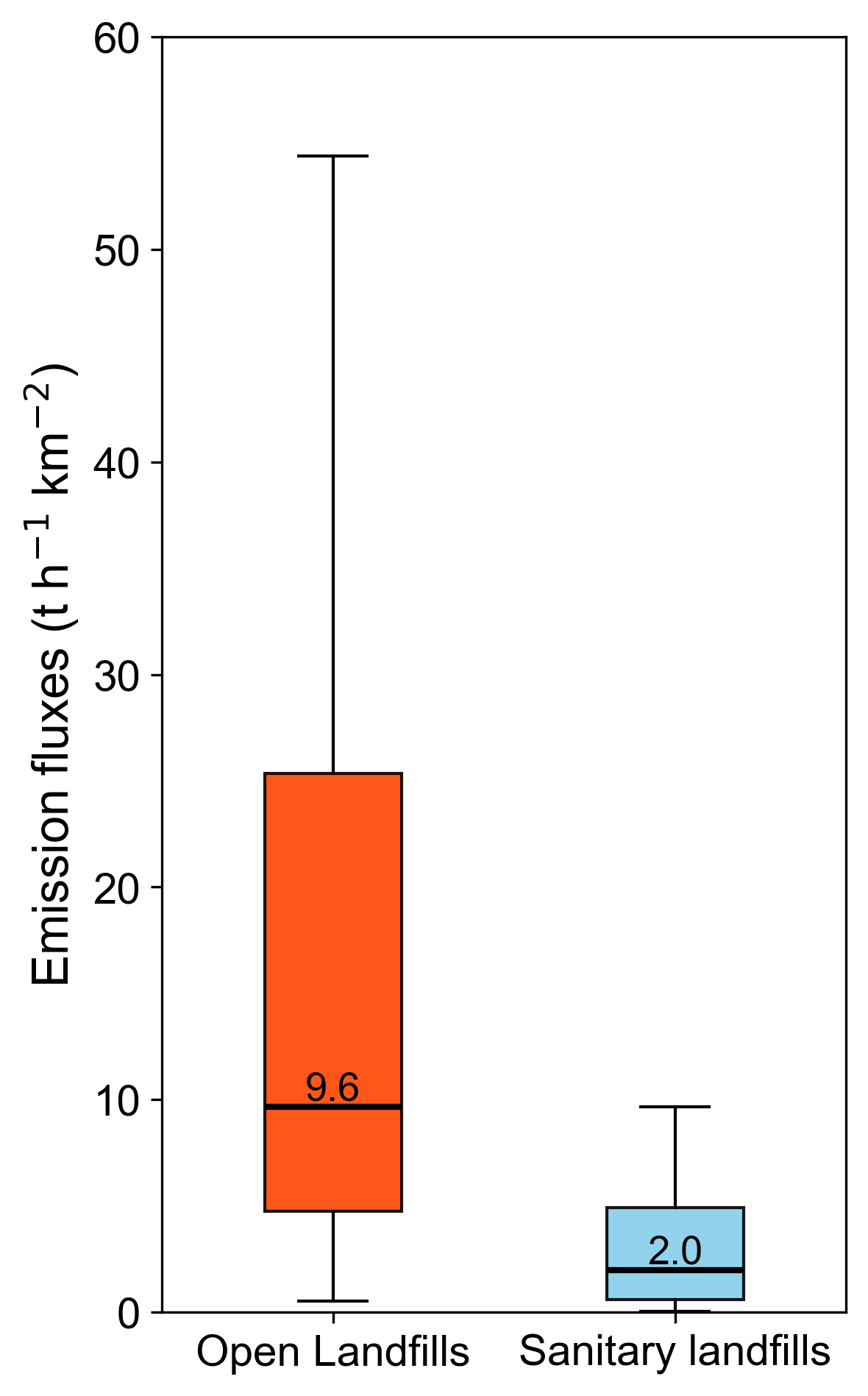Methane is a potent greenhouse gas with a much stronger short-term effect on warming than carbon dioxide. Over the near-term (20 years), one ton of methane has the warming effect of up to 84 tons of carbon dioxide, while over a hundred years, one ton of methane has the warming effect of about 28 tons of carbon dioxide. For this reason, controlling methane emissions is a high priority in limiting warming.
Addressing methane emissions from landfills is particularly important since they account for 18% of global anthropogenic methane emissions. Unfortunately, traditional landfill methane monitoring-relying on ground measurements and modeling-has long been limited by sparse coverage, low accuracy, and high fieldwork costs.
Now a research team led by Prof. CHENG Tianhai from the Aerospace Information Research Institute (AIR) of the Chinese Academy of Sciences has made a breakthrough by developing a high-resolution satellite remote sensing method to quantify global methane emissions from landfills. The team's findings were published in Nature Climate Change on July 28.
The new approach uses satellite data with 30-meter spatial resolution and 10-nanometer spectral resolution, combined with a matched filter algorithm and enhanced integrated mass method. This allowed the team to identify and measure 367 distinct methane plumes (feather-like structures formed as methane disperses) across 102 landfills worldwide, enabling precise global quantification of emission rates.
"Satellite remote sensing delivers consistent, high-resolution global quantification that traditional methods can't match," said Prof. CHENG, the study's corresponding author. "Our tool boosts both accuracy and coverage, offering a new means of global methane surveillance-critical for informing international mitigation policies."
To validate their method, the researchers compared satellite-derived data with airborne measurements (previously verified via ground observations), finding strong alignment that confirmed reliability.
Their analysis focused on two primary landfill types: open dumps (lacking containment) and engineered sanitary landfills. Results showed open dumps emit 4.8 times more methane on average-a first-of-its-kind global assessment linking waste management practices to emission levels.
The team also found that the widely used Emissions Database for Global Atmospheric Research (EDGAR), developed by the EU, underestimates emissions from high-polluting open dumps by roughly fivefold on average.
"Our work provides a basis for correcting such biases in current inventories," noted TONG Haoran, the study's first author and a PhD candidate at AIR.
Building on these findings, the researchers urge strengthened international efforts to improve landfill infrastructure and waste management, as well as development of a global satellite data-sharing platform to ensure equitable access-especially for resource-limited nations-to information supporting greenhouse gas mitigation.

Satellite-based remote sensing detection of methane distribution at landfill sites. Panels a-c depict open dumpsites, while panels d-f show engineered sanitary landfills. (Image by AIR)

Methane emission flux distributions from two landfill types: open dumpsites and sanitary landfills. (Image by AIR)






